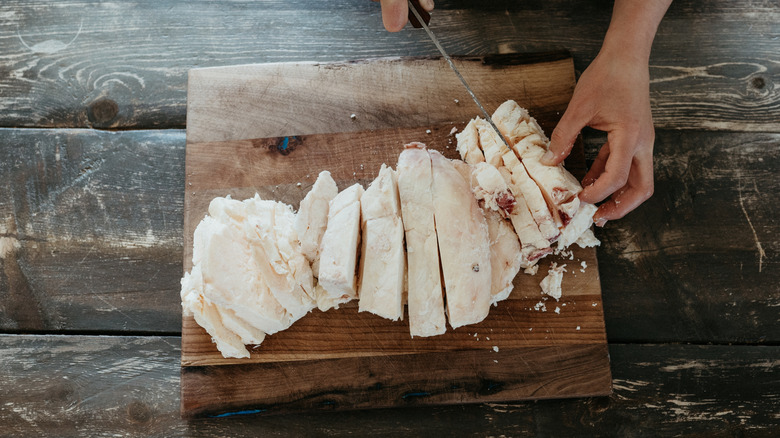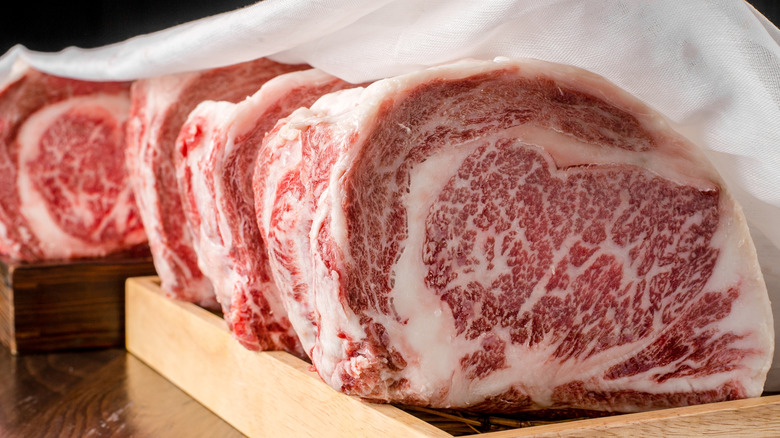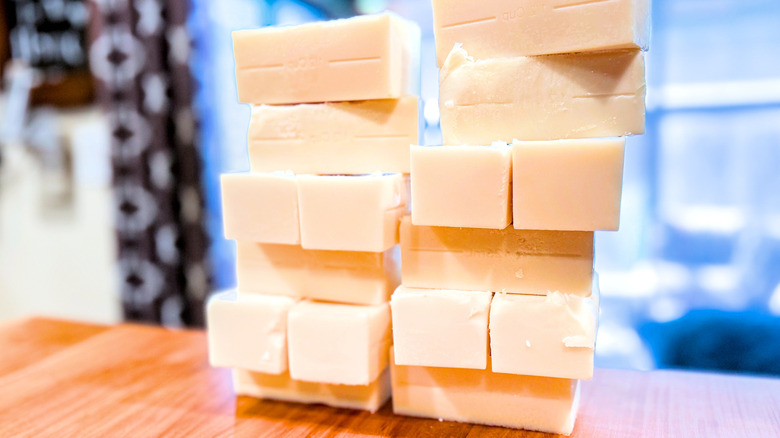How Wagyu Beef Tallow Differs From Regular Beef Tallow
Beef tallow has lent a meaty flavor to dishes for centuries. Even today, several chain restaurants use beef tallow in their cooking to pack a punch of beefy umami, including Popeyes and Smashburger. It's also the same ingredient behind the McDonald's fries scandal you might have forgotten about. For those unaware of this age-old cooking ingredient, which has become a raging skincare trend and is commonly used to make soaps and candles (yep, it's pretty multifaceted), beef tallow is essentially rendered fat. It can come from any cut of beef, though it typically comes from the fat around the kidneys, also called suet.
Tallow is made by slowly cooking beef fat and straining it, similar to lard, which is made from pork fat. Just like lard, beef tallow remains naturally solid at room temperature. It is believed to be more flavorful than vegetable oil and is most commonly used for deep frying to create an irresistible flavor profile, though frying with beef tallow does have its pros and cons. Beef tallow can be made from different types of beef. It is common knowledge that Wagyu ranks at the top in terms of quality meat, besides being the most expensive cut of beef you can buy. But is the difference between regular beef and wagyu beef as stark when it comes to the tallow as well? After all, fat is fat ... right? Not quite.
Wagyu beef tallow has a superior texture and has a high smoke point
The most noticeable difference between Wagyu and regular beef tallows hits you in the texture. Tallow rendered from Wagyu is far richer than tallow from regular beef. It is velvety and has a luxurious mouthfeel. The texture of wagyu beef tallow is actually better than butter. What brings about this quality is the high level of intramuscular fat, which is found in much smaller amounts in regular beef. The careful attention given to raising Wagyu cattle is why the meat has such intricate marbling and quality fat. Because of this marbling, Wagyu tallow can't be made by simply skimming fat off the meat before collecting and cooking it — a less popular method used for rendering regular tallow.
Wagyu beef tallow also has a higher smoke point. A higher smoke point makes it ideal for various cooking methods, from searing to frying. You can go through Daily Meal's guide on smoke points to learn all about it. Typically, oils with a higher smoke point tend to be rich in monounsaturated fats, and Wagyu beef tallow is no exception. It is also packed with oleic acid, the same heart-healthy fat found in olive oil. When eaten in moderation, it may not only help avoid negatively impacting your cholesterol but could also support heart health.
Regular beef tallow works well when you're trying to save
While Wagyu beef tallow might be superior in texture and content, it's not as though it isn't worth investing in regular beef tallow; it just depends on the type of beef it's made from. Regular might be a broader bracket when contrasted with Wagyu beef and can include both grass-fed as well as grain-fed beef tallow. As you might have guessed, grass-fed beef tallow is a level up from grain-fed beef for similar reasons, like the texture and nutritional content. It is much higher in omega-3 and has a superior taste. But unlike Wagyu beef, these types of tallow can be rendered simply by skimming and collecting the fat. Regular beef tallow is also much less nuanced and has a beefier taste than Wagyu beef tallow. Like Wagyu beef tallow, it has a high smoke point but is far more affordable, making it a great option for whipping up professional-quality dishes that need beef tallow when you're cooking on a budget. In the end, whether you reach for Wagyu or settle for traditional tallow depends on what you're cooking and how deep you're willing to dip into your wallet. Either way, you're in for a meaty, flavorful treat.


